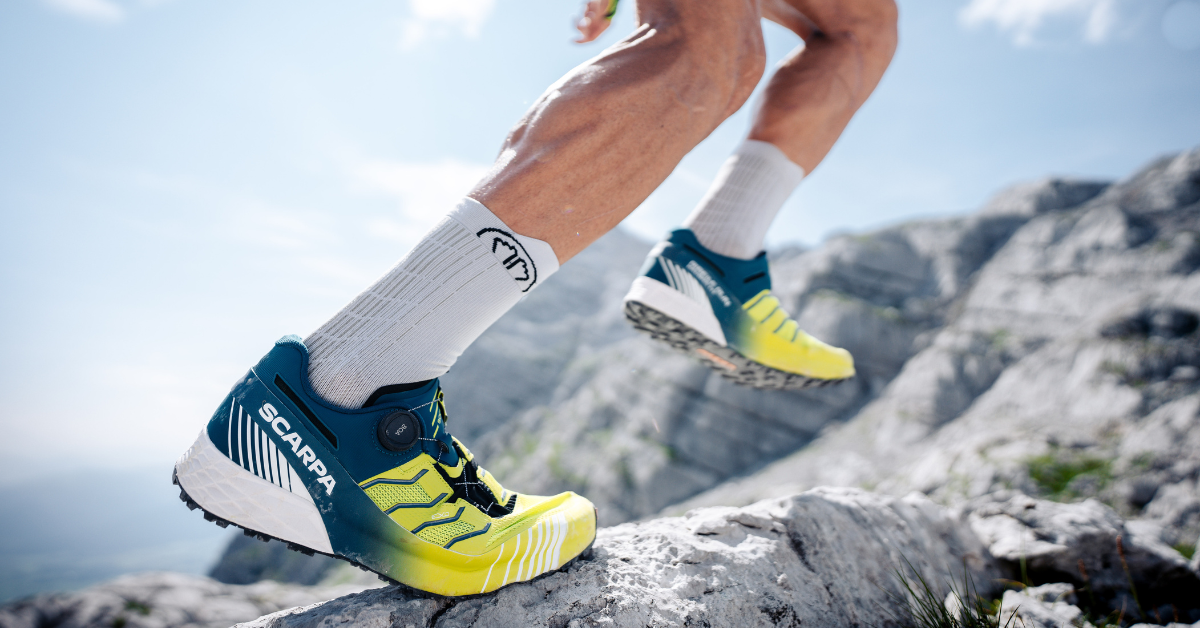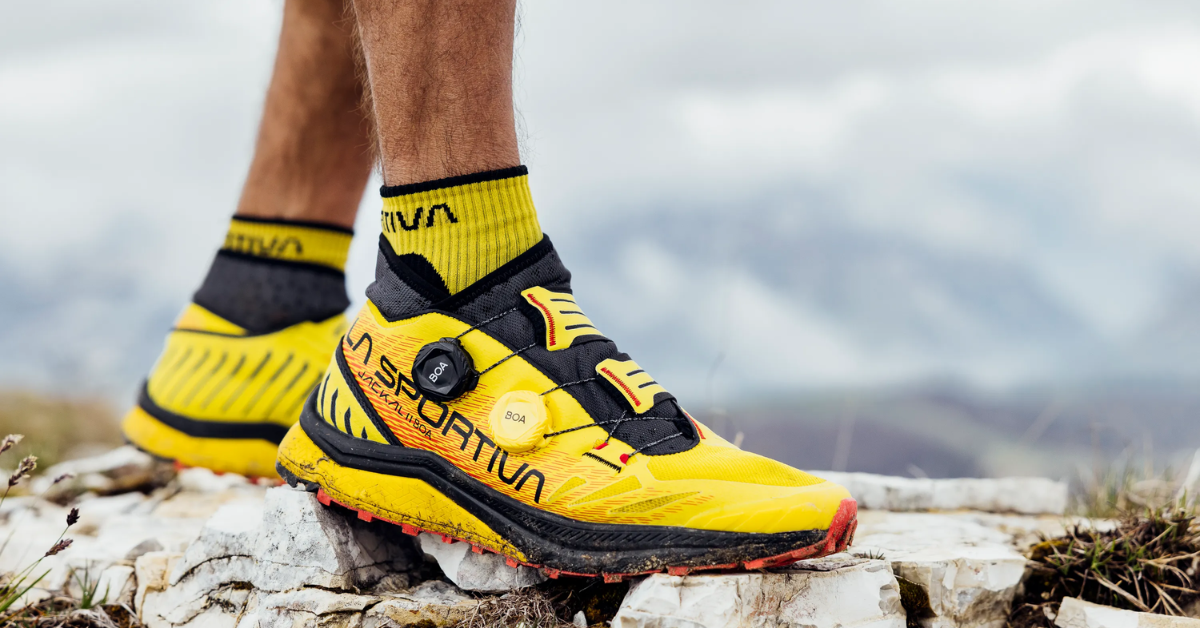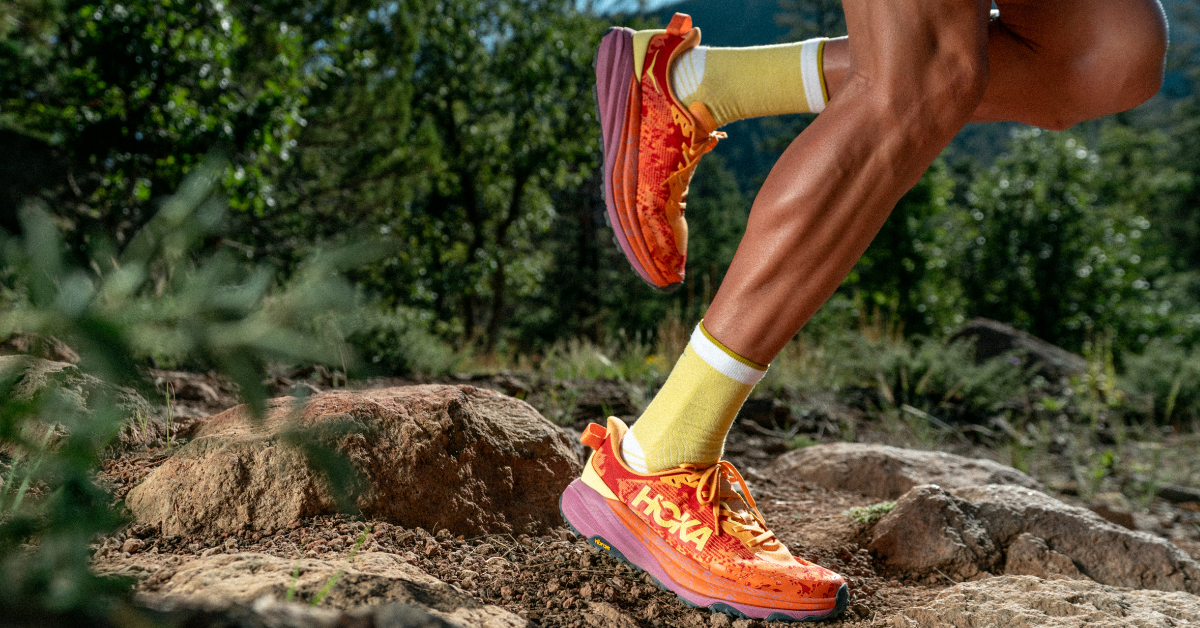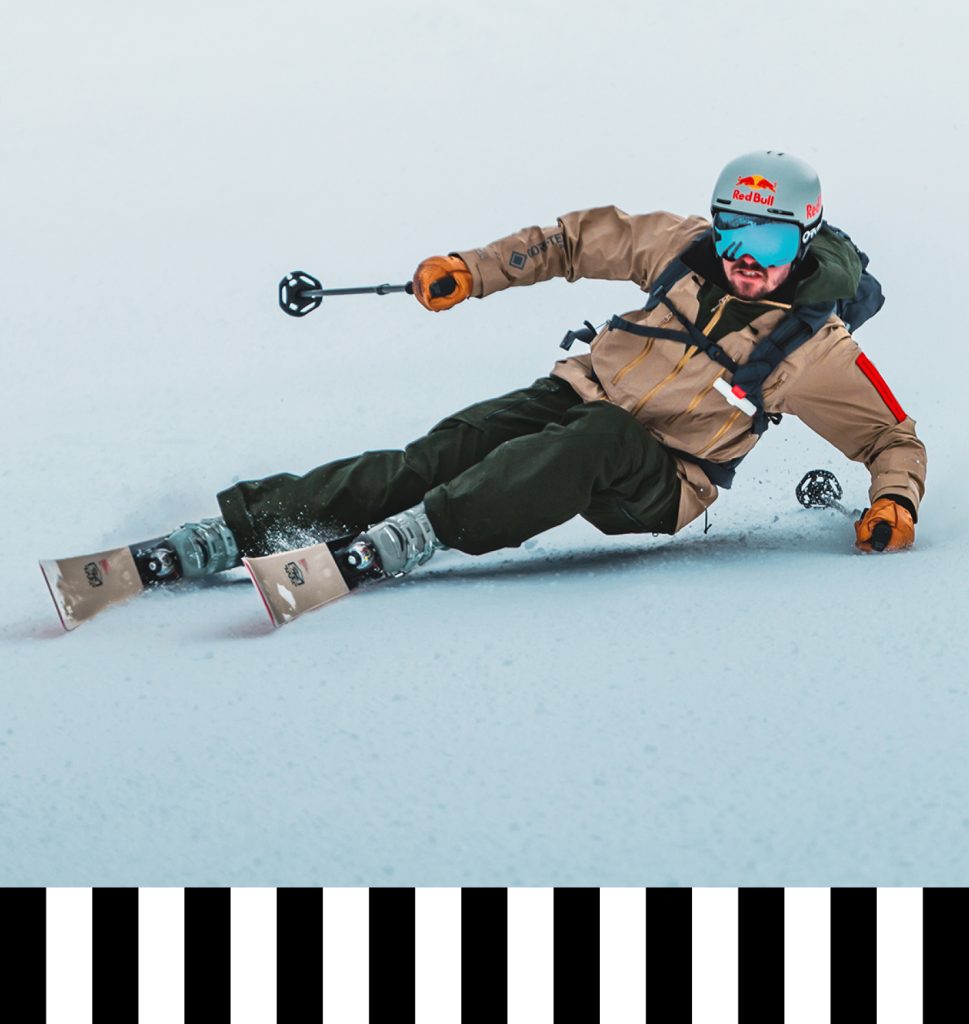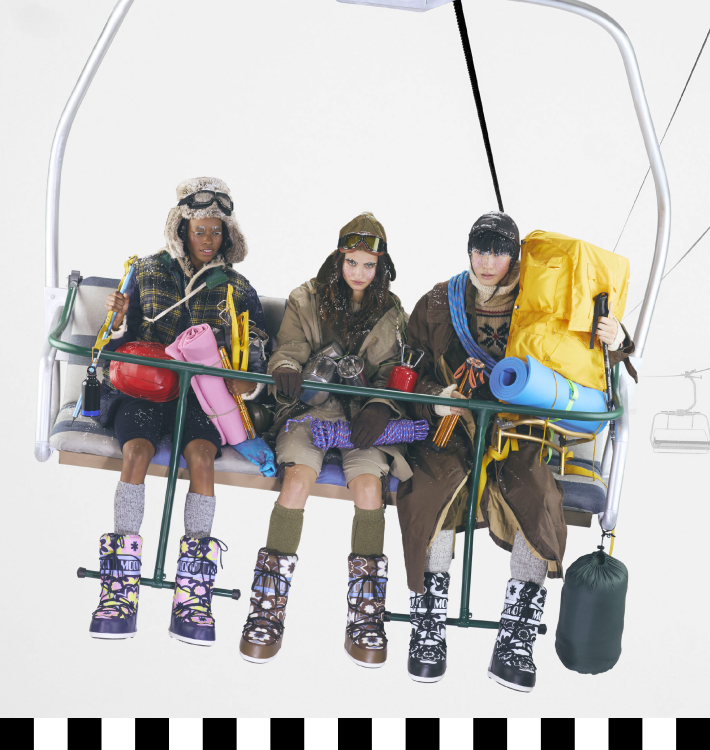Trail running is a fascinating sport that combines the thrill of running with the exploration of natural paths and is very different from road running. This discipline is characterized by its strong “off-road” orientation, where asphalt, if present, makes up less than 20 percent of the route. This peculiarity allows runners to immerse themselves in nature, offering an authentic running experience far from the hustle and bustle of the city.
This guide will provide you with the essential criteria for choosing the perfect shoe model for this sport, ensuring comfort, safety and excellent performance on any trail.
- Key features of a good trail running shoe
- Pros and Cons of GTX technology in trail running shoes
- Which brands offer the best trail running shoes?
- Difference between trail running shoes and hiking shoes
- Difference between running shoes and trail running shoes
- How to choose the perfect size for your trail running shoes
Key features of a good trail running shoe
Trail running shoes are critical to the success and comfort of your outdoor adventures. Investing in a good pair will help you avoid injuries, improve your performance, and enjoy every run.
Here are the most important features to look for:
- Outsole and traction: Women’s or men’s trail running shoes are designed to provide the best support and comfort on challenging and uneven surfaces. Unlike traditional running shoes, they have soles with an aggressive tread pattern designed to provide excellent traction on wet, muddy and rocky terrain. However, due to the unique characteristics of the outsole, it is recommended to limit use on pavement to prevent premature deterioration.
- Cushioning and support: It is important to absorb shock and protect the joints during long runs on rough trails. Most trail running shoes offer more robust cushioning than traditional running shoes, but the amount and type of cushioning varies.
- Protection: In addition to traction, trail shoes must offer protection against gravel, twigs and stones that may be lifted during the run. A shoe with a reinforced toe box defends the feet from bumps and bruises.
- Waterproof or breathable: Depending on your needs, you can choose between waterproof (Gore-Tex) or breathable models. Waterproof shoes are ideal for muddy and wet terrain, while breathable models are best for dry and warm conditions.
Pros and Cons of GTX Technology in Trail Running Shoes
Many trail running shoes have a GTX version that, while aesthetically similar to standard models, has one significant feature: a waterproof Gore-Tex membrane that blocks water from entering the shoe. This keeps your feet dry, which is especially useful in wet conditions or during the winter months.
But beware: this doesn’t mean you’ll stay dry when crossing small streams of water. Seepage from above is unavoidable unless you use specific models with ankle covers, such as La Sportiva’s Uragano GTX.
Despite the significant benefits, GTX may not be the best choice during the summer months. This membrane is known for its thermal insulation properties and lower breathability than other materials. As a result, the temperature inside the shoe can rise, causing the foot to overheat. In hot weather, this can decrease runner comfort, negatively impact performance, and increase the risk of blisters or other problems related to improper moisture management inside the shoe.
Which brands offer the best trail running shoes?
If you’re looking for quality footwear for your mountain runs, we recommend the Altra brand: their models feature an extra-wide sole and an innovative sole design that mimics the shape of your toes, allowing for a more natural and ergonomic contact with the ground. Dedicated exclusively to trail running, Altra offers targeted and specialized products for trail running enthusiasts.
For trail runners looking for shoes with highly responsive, shock-absorbing insoles, the Scarpa brand is an excellent choice. This brand is known for the precision and quality of its shoes, which are particularly effective both uphill and downhill. Some of the most popular models among runners are the Ribelle Run and the Golden Gate, both known for their excellent performance.
La Sportiva, another giant in the industry, has its roots in Trentino and an international reputation. It offers a wide range of shoes suitable for all types of trails and needs, dividing the models as follows:
- Long Distance: for athletes who want to go well beyond the 42 km marathon and stay on the trails for hours. In this case, comfort is the key. Models like the Prodigio, Jackal Boa and Lycan are definitely good allies.
- Medium Distance: For trails that generally range from 20km to marathons. Models such as the Mutant and Akasha II offer perfect balance and good protection on the toe and sides of the upper.
- Short Distance: Shoes for training, short races or verticals are grouped in this category. Lightness is everything. The Bushido provides protection and traction while minimizing energy expenditure.
Difference between trail running shoes and hiking shoes
Trail running shoes are specifically designed to promote lightness and agility, essential qualities for those who run on such trails. These shoes are characterized by their comfort and excellent grip, features that allow you to maintain a fast pace on all types of terrain.
On the other hand, hiking boots are heavier and sturdier, designed to handle difficult terrain and withstand heavy loads. Ideal for extended hikes of all levels, these shoes offer superior protection and durability, making them the safest choice for multi-day hikes.
Despite the differences between trail running shoes and hiking boots, it is interesting to note that a growing number of people today tend to prefer the former even for hiking, especially short, less strenuous hikes. This is due to several factors:
- Increased comfort: the softness and lightness of trail running shoes offer a more pleasant feeling when hiking in the mountains.
- Versatility: These shoes are well suited for hiking and are practical for a wide range of outdoor activities.
- Style: the modern, eye-catching design of trail running shoes makes them particularly attractive to a young audience, for whom aesthetics is often an important consideration.
The difference between running shoes and trail running shoes
Road running and trail running are two disciplines that, while sharing the essence of running, have very different requirements and equipment. While road running focuses on speed and a steady pace, aided by smooth surfaces such as asphalt, trail running immerses the runner in the natural environment, where comfort and support on uneven surfaces are essential.
Women’s and men’s running shoes are designed to protect the foot from repetitive impacts on a hard surface. They also feature a smooth outsole with a lightweight tread and breathable mesh uppers that help manage heat effectively. Their flexibility and advanced cushioning systems are ideal for pavement and provide dynamic comfort while running.
Designed for unpaved terrain, trail running shoes feature a sole with an aggressive tread pattern and deep lugs for excellent traction on uneven, muddy or rocky terrain. The outsole is often made with more durable rubber compounds to withstand the wear and tear of rough trails. Trail running shoes also offer additional protection, such as reinforced toes (toe caps) and underfoot plates (rock plates) to protect feet from obstacles on trails. The upper is generally more durable and tear resistant.
An example of a brand that excels in both running contexts is Hoka One One, which you can find on the Lagazoi website. Hoka One One shoes are known for their oversized midsole that provides exceptional cushioning. This design provides high shock absorption, reducing stress on joints and muscles and improving comfort during long runs.
How to choose the perfect size for your trail running shoes
Choosing the right size for your trail running shoes is crucial to preventing injury and ensuring maximum comfort when running in the mountains. Here are some helpful tips to help you make the right choice:
- Toe space: It is important to have about 1 cm of space between your toes and the toe of the shoe. This extra space allows your feet to expand as you run and prevents your toes from hitting the front of the shoe, especially when going downhill. An effective way to check for enough room is to use an inclined platform that simulates the slope of trails. In our store, we offer the opportunity to test shoes on different types of inclines.
- Motion test: While standing, try to lift yourself up on your toes and then tap the ground lightly. If there is still some space between your heel and the back of the shoe, it means that the size you have chosen is probably a good fit.
- Socks: Do not underestimate the importance of a good pair of socks. Choose socks made of technical fabrics specifically for trail running, rather than cotton, to avoid chafing and moisture retention.
At Lagazoi, we are here to help you find the perfect socks for you. Visit our store to discover all available styles of men’s trail running shoes and women’s trail running shoes.

